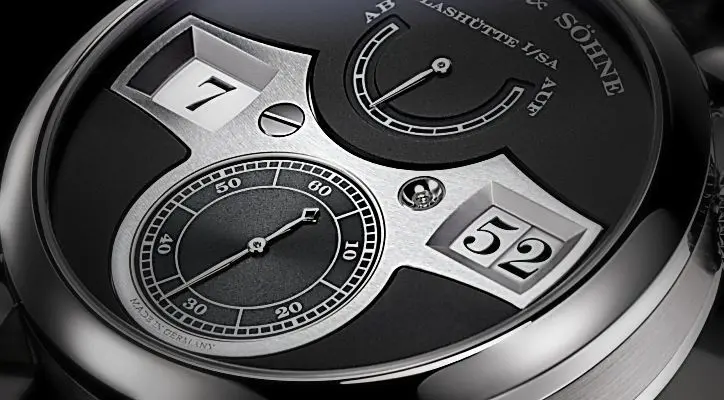
The German brand has unveiled the revolutionary A. Lange & Sohne Zeitwerk in May 2009. At that time, it was one of their most daring and controversial (as well as immensely beautiful from the point of view of pure engineering) models. Not as deliberately high-tech as some wristwatches made by, say, Louis Moinet -another brand that is known for its audacious approach to industrial design- this “digital” timekeeper attracted a lot of attention even before it went on sale later that year.
While the concept of a mechanical watch with a digital time display format is by no means new (IWC used a similar approach in the Da Vinci Perpetual Calendar Digital Date-Month collection displaying the “date” and “month” readings in simple “DD” / “MM” format), the caliber design is revolutionary and the watch itself is completely stunning in its gorgeous combination of explicitly simplistic exterior and a highly complicated (and extremely finely crafted) mechanism.
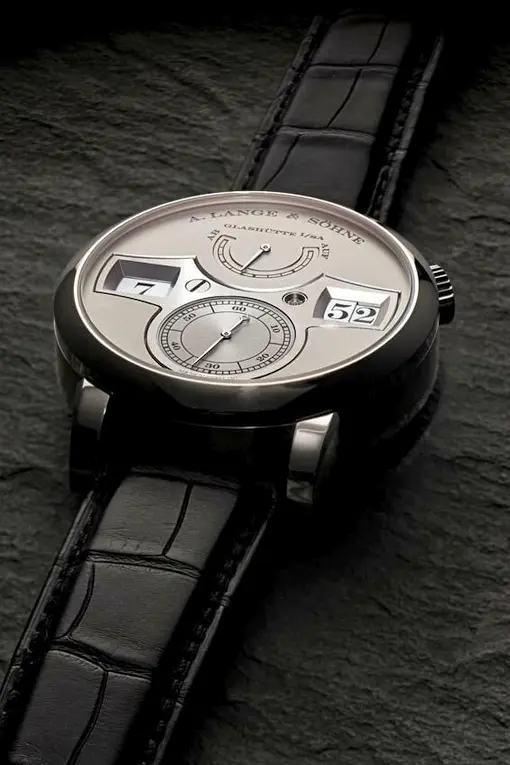
The Zeitwerk‘s main point of attraction is the huge (Being 33.6 mm in diameter, it leaves no vacant space inside the gorgeous 41.9mm case made either of 18-karat gold -rose or yellow- or of even more expensive platinum!) hand-wound Caliber L043.1.
Developed and assembled in-house, comprising 388 parts and sitting on 66 synthetic jewels needed to reduce friction and increase available power reserve, the movement makes possible a simultaneous and instant jump of the three numeral discs, one of which displays hour and the others indicate minutes (see the image below).
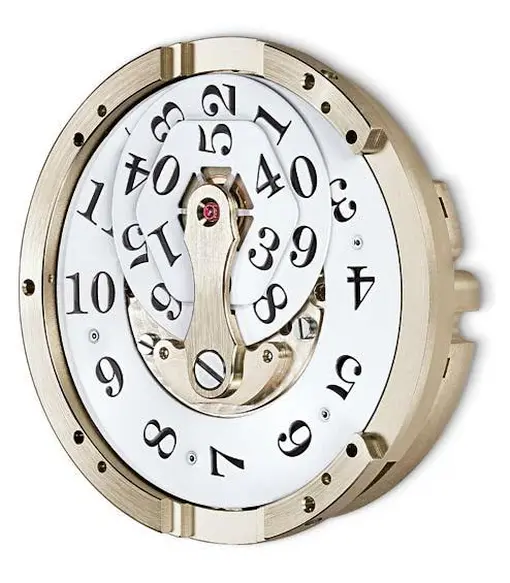
Doing so requires an impressive -perhaps, even tremendous for such a tiny mechanism- the amount of energy that must be unleashed at just the right time in a perfectly synchronized burst of energy needed to turn the disks with great speed. The German watchmakers decided that a compact secondary source of power, a so-called remontoire, will be the best way to store and deliver the needed energy.
Of course, it would have been extremely difficult to make a jumping digital indicator for the seconds display, so A. Lange & Sohne decided to leave it to the traditional small-seconds hand located at 6 o’clock (I wonder if there are any plans to make an even more expensive version that would feature a tourbillon module acting as a small seconds indicator.)
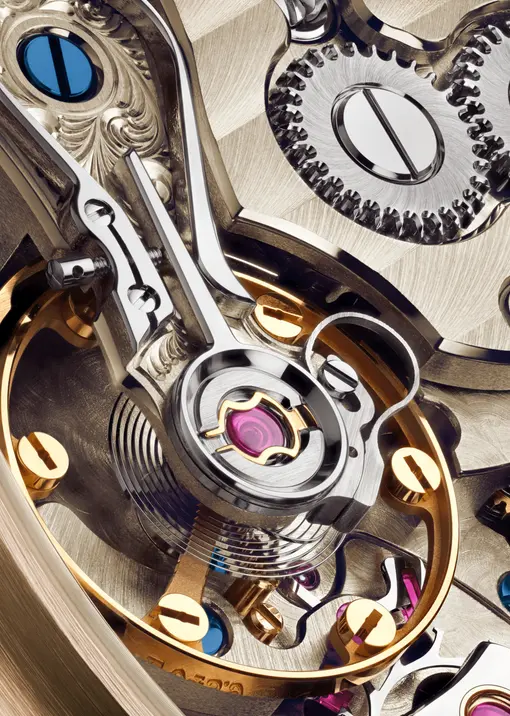
Visually connected by the “Time Bridge” element made of German silver (untreated for the yellow and pink gold models and rhodium-plated for the gold and platinum version) that the company loves so much, the whole display looks beautiful. However, the oversized power reserve indicator steals too much of the dial’s real estate, to my taste, without giving a lot in return.
Still, I must give the German engineers their due and admit that the indicator doesn’t look like an afterthought and plays nicely with other elements of the dial.
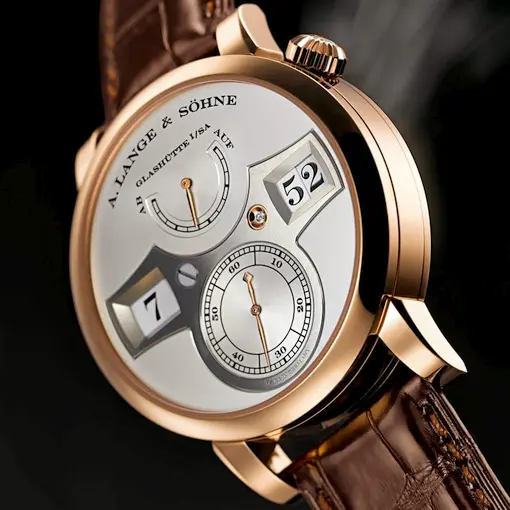
Sources say that the yellow gold model will sell for €38,000, the rose gold / white gold mix will be available for €42,000, and you will be able to buy the platinum version for approximately €59,000. Well, my wishlist has just got one item longer.
See also: IWC Pilot Double Chronograph Edition TOP GUN
WWR Verdict
Originality 4.5/5
Build Quality: 5/5
Usability: 5/5
Overall Legibility: 5/5
Nighttime Legibility: 1/5
Value for Money: 4.5/5
Overall Rating: 5/5
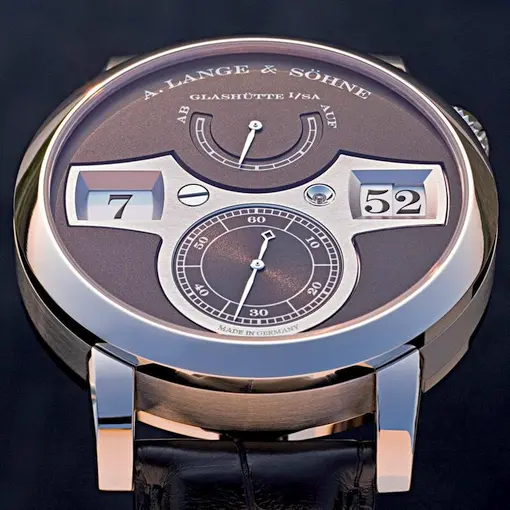
Photos: A. Lange & Sohne
A. Lange & Sohne Zeitwerk specification
Price range: €38,000 — €59,000 (Retail)
Movement: Caliber L043.1, hand-wound, 18,000 vph, Made in Germany
Functions & Complications: Jumping hours and minutes, power reserve indicator, small seconds
Power reserve: 36 hours
Case: Yellow Gold (140.021), White Gold (140.029), Pink Gold (140.032), Platinum (140.025)
Diameter: 41.90 mm
Case height: 12.60 mm
Dial: Solid silver, sandblasted
Water resistance: 30 meters
Strap: Hand-stitched crocodile strap with Lange prong buckle in gold or platinum
Crystal: Sapphire, antireflective
Back: Sapphire
